The Panathenaic Way: Athens’ Historic Pathway Comes Alive...
A major restoration project is bringing...
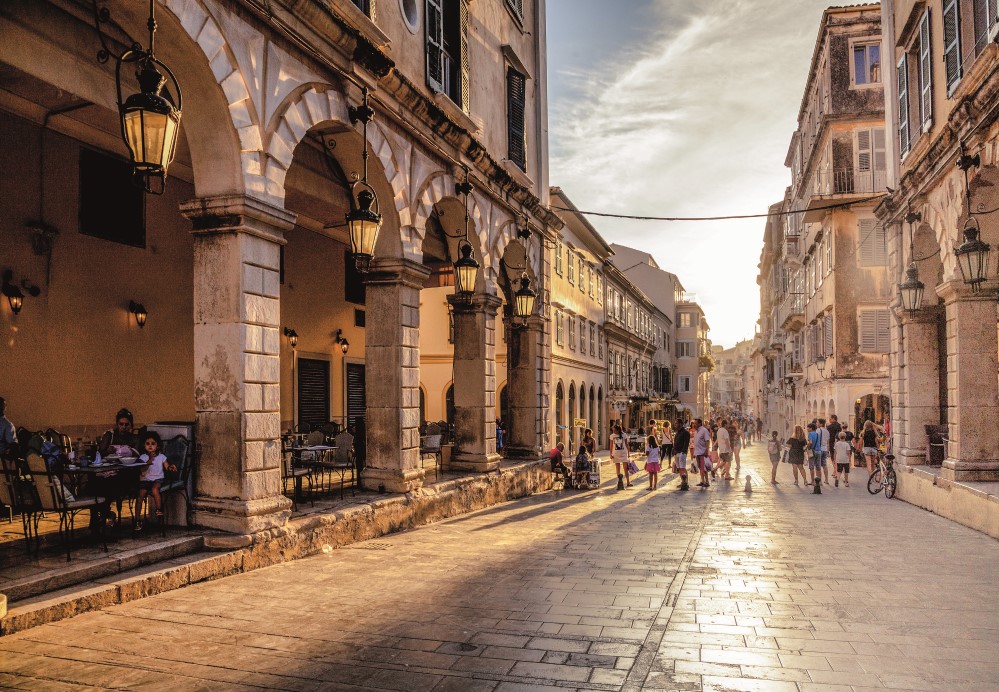
Corfu Town, which has remained
largely unchanged since Venetian
times, has been on UNESCO’s World
Heritage List since 2007.
© Visualhellas.gr
Perhaps the best way to first set eyes on Corfu is from the sea.
That’s how I remember seeing it as a child when, in the days before the Rio-Antirrio bridge and the Ionian Highway, the journey from Athens took a whole day. We’d reach the harbor at Igoumenitsa in the afternoon and catch a glimpse of Corfu from the boat a little before dusk.
No matter how tired I was, I always looked forward to seeing the town reveal itself. It would emerge faintly on the horizon, a perfect miniature of a Venetian city floating on the water.
Palaio Frourio, the old castle, would appear on the left, then Mouragia, with its tall, proud Venetian buildings in shades of ochre and rust. In the far distance, the glow of yellow Byzantine tiles on the rooftops.
This year, Corfu is likely to be quieter than ever, leaving you free to explore without the hordes of tourists who normally lay siege to it every summer.
Start from the main town, which was designated a UNESCO World Heritage Site in 2007 and recognized as a conservation zone – it has remained virtually unchanged since Venetian times.
Take a stroll around Spianada, the town’s largest square, with its views of the sea and the Bay of Garitsa, zig-zagging between the children on bicycles.
Stop for a while at Cafetierra to enjoy the delightful aroma of some of the best coffee on the island being roasted and ground in-house.
Alternatively, try some Chimarios tsitsibira, sold almost everywhere, including kiosks in the town center. A fresher, spicier version of ginger beer, it’s an inheritance from the time of the island’s status as a British protectorate.
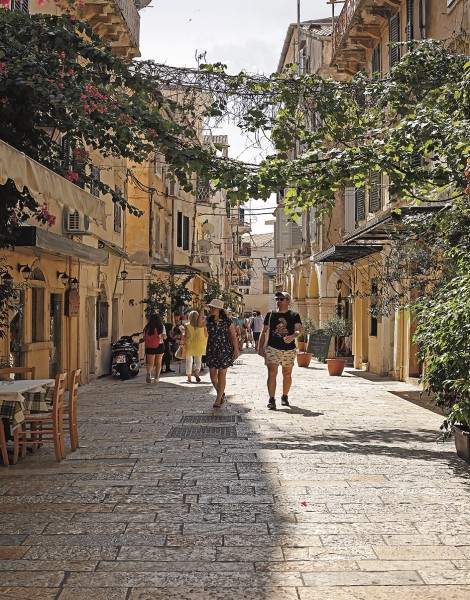
Guilford Street in Corfu Town.
© Nikos Kokkas
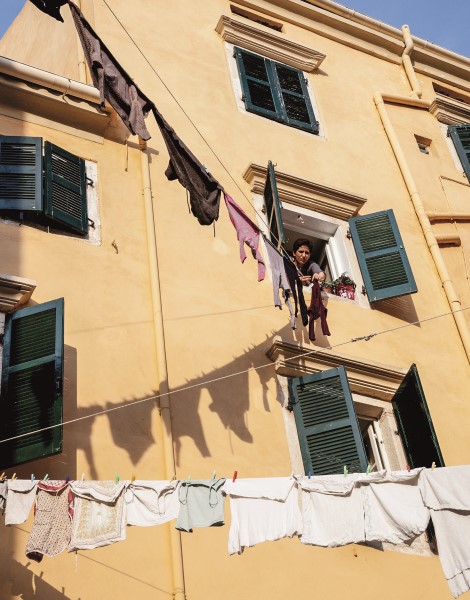
Clothes hung out to dry high above the alleys in Corfu Town.
© Georg Knoll/ Laif
Not that this is the only British legacy. On the lower section of the square is a cricket pitch – home to the Greek national team, which is based, of course, in Corfu.
I recommend getting lost in Cabielo, the oldest part of town. This area is a densely built labyrinth of narrow alleyways known as kantounia (from the Italian word “cantone”, meaning “edge” or “district”).
The laundry hanging between the balconies of tall Venetian houses flutters in the breeze as the scent of garlic and vinegar – two basic ingredients of the local cuisine – wafts from open windows.
At any moment, you might end up turning into a blind alley occupied by a single fig tree, or onto a flagstone terrace overlooking the sea, or in beautiful Kremasti Square, with its stone well and blooming bougainvillea, like something from a movie set.
There are parts of Corfu where nature is riotously assertive. The island turns deep green after the rainy months, practically drowning in olive and cypress trees, dense with moisture.
Exotic lizards scuttle between tree roots and zambes (as toads are known locally) shelter in lush undergrowth. On May and June evenings, fields are aglow with swarms of fireflies.
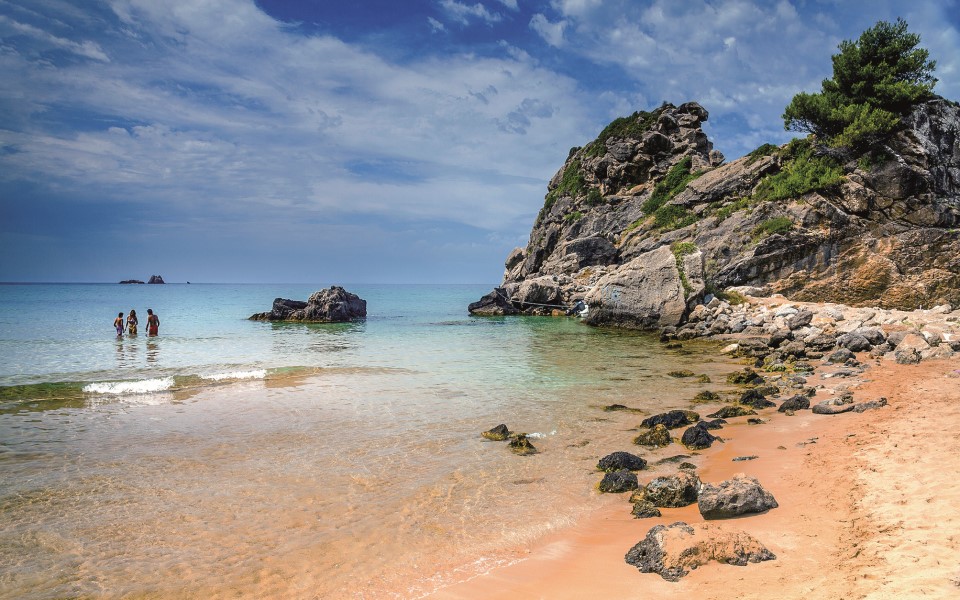
Glyfada Beach west of Corfu Town.
© Visualhellas.gr
Wherever you end up staying, make sure you’ve got a car; it’s a necessity on Corfu if you’re going to undertake your own exploration of the island.
The northern part of Corfu is the area most loved by tourists, especially British visitors, thanks to naturalist Gerald Durrell’s books about his childhood on Corfu (“My Family and Other Animals,” “The Garden of the Gods” and “Birds, Beasts and Relatives”).
You’ll also find some of the prettiest villages on the island here, including Karousades, Ano Garouna and Kato Garouna. The bays from Nissaki to Kalami, cherished by fans of Durrell’s writings, are ideal for swimming and good fishing.
With fewer visitors, perhaps this year will be the ideal time to explore beautiful Palaiokastritsa with its caves and emerald waters.
If you like pebble beaches, Rovinia is a good choice. You have to negotiate a bumpy road to get there, but the beach, in a cove with crystal clear waters, makes the journey more than worth it. Make sure to bring a beach umbrella and provisions for the day.
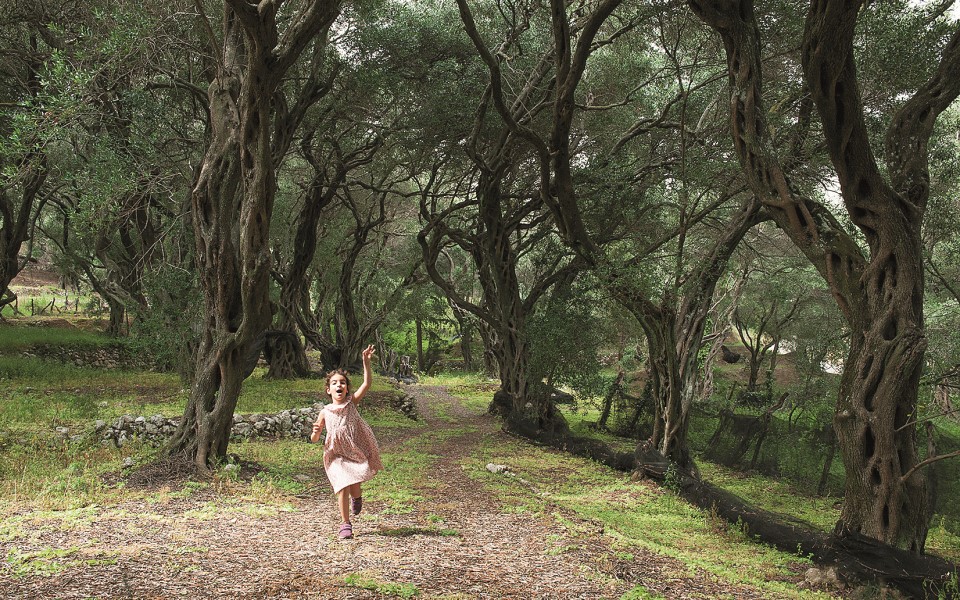
From one end to the other, the island of Corfu is covered in olive groves.
© Julia Klimi
The southern part of Corfu – where the island narrows – is less well-explored.
On one side of the island you’ll find beaches lapped by the Ionian sea – small inlets carpeted with pebbles, with groves of olive and cypress trees often extending to the water’s edge.
On the Adriatic side, sandy beaches stretch for miles. One of the most popular of these in recent years has been Chalikouna. At the start of summer, the dunes are covered in wild orchids.
What’s more, the beach is right next to the Korissia lagoon, a Natura-protected wetland where you can see everything from cormorants to flamingos.
A more family-friendly location is Gardenos, next to the village of Vitalades. Years ago, the beach was divided into two, with one end being occupied by families in a very well-organized set-up which even featured a duck pond.
The other end of the beach was frequented by nudists, who would bake in the sun next to haphazard constructions of stone and reeds. Both the nudists and the ducks have now moved on, but the beach – largely deserted in parts – remains the perfect place for a quiet walk on the sand.
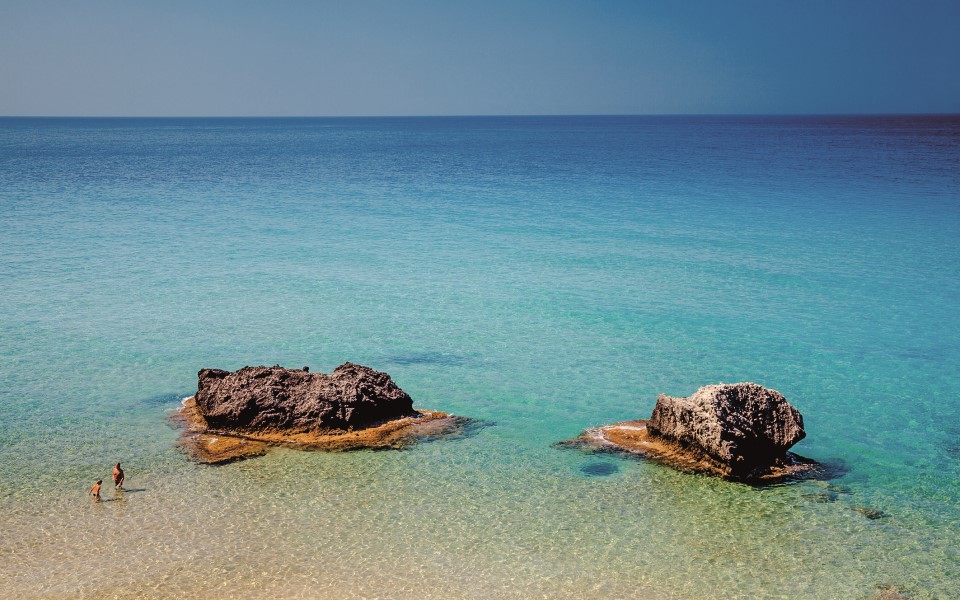
Myrtiotissa Beach is particularly popular with nudists.
© Visualhellas.gr
One summer, a group of my friends and I decided to spend the whole night on this beach. I’ve never seen so many stars in the sky. In his book “My Family and Other Animals,” Durrell describes just such a night swim in Corfu:
“Lying spread-eagled in the silky water, gazing into the sky, only moving my hands and feet slightly to keep afloat, I was looking at the Milky Way stretched like a chiffon scarf across the sky and wondering how many stars it contained. I could hear the voices of the others, laughing and talking on the beach, echoing over the water.”
• The relics of St Spyridon, patron saint of the island, are taken out of the church in procession four times a year. On August 11, Corfu celebrates the miracle by which Spyridon saved the island from an Ottoman siege in 1716. Witnessing a traditional liturgy with brass bands accompanying the relics around the Old Town is a truly unique experience.
• Beyond the usual culinary offerings of kumquat preserves, sofrito (garlic-heavy) dishes and pastitsada (a veal and tomato stew), one can also sample bolsevikos (‘Bolshevik’), a syrupy sweet with a cake base and crème de pâtisserie topping. You can find it at the Voulismas Patisserie (Sevastianou 35).
• Cake Boutique (Delvinioti 1) is a tiny sweet shop featuring French patisserie and specializing in macaroons. Ask for the prize-winning macaroons flavored with savory nouboulo (a local charcuterie) and fig salami. Or you can try the delicious ispahan, a meringue cake made with rose, lychee and raspberry.
• The Klimataria taverna, run by the Bellos family in Benitses, remains a not-so-wellkept secret. Here you can sample traditional Corfu specialities prepared with the very best ingredients. Make sure to reserve in advance, as there aren’t many tables.
A major restoration project is bringing...
Discover how ancient Greek architecture inspired...
From historic landmarks to edgy street...
A forgotten world comes to life...